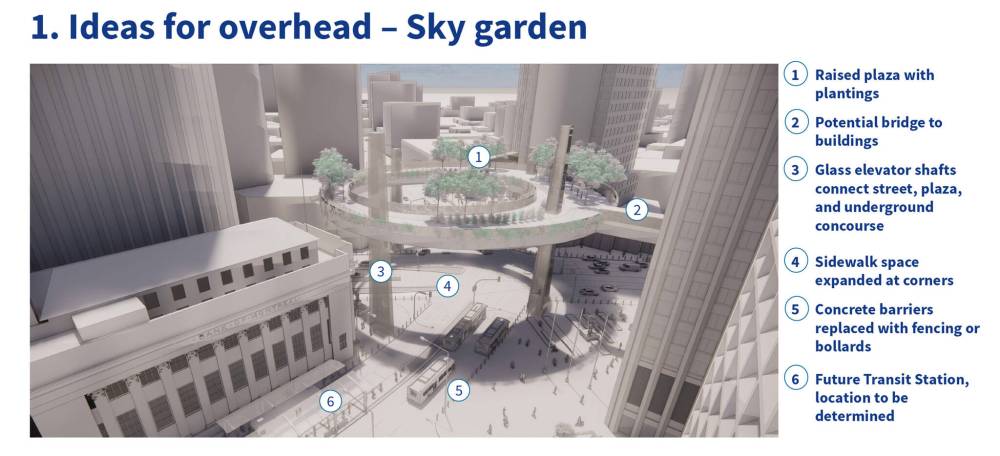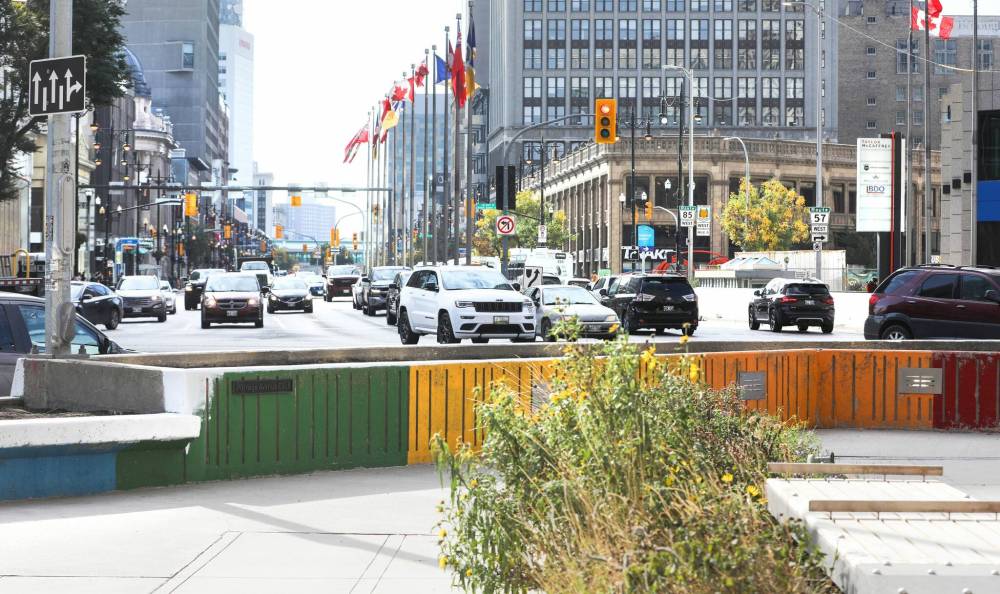Remove the barricades on how you think about Portage and Main
Read this article for free:
or
Already have an account? Log in here »
To continue reading, please subscribe:
Monthly Digital Subscription
$0 for the first 4 weeks*
- Enjoy unlimited reading on winnipegfreepress.com
- Read the E-Edition, our digital replica newspaper
- Access News Break, our award-winning app
- Play interactive puzzles
*No charge for 4 weeks then price increases to the regular rate of $19.00 plus GST every four weeks. Offer available to new and qualified returning subscribers only. Cancel any time.
Monthly Digital Subscription
$4.75/week*
- Enjoy unlimited reading on winnipegfreepress.com
- Read the E-Edition, our digital replica newspaper
- Access News Break, our award-winning app
- Play interactive puzzles
*Billed as $19 plus GST every four weeks. Cancel any time.
To continue reading, please subscribe:
Add Free Press access to your Brandon Sun subscription for only an additional
$1 for the first 4 weeks*
*Your next subscription payment will increase by $1.00 and you will be charged $16.99 plus GST for four weeks. After four weeks, your payment will increase to $23.99 plus GST every four weeks.
Read unlimited articles for free today:
or
Already have an account? Log in here »
Hey there, time traveller!
This article was published 26/04/2023 (952 days ago), so information in it may no longer be current.
Hold onto your steering wheels, folks. We’ve got another chance to fix Portage and Main.
This week, the city released a discussion paper outlining some of the infrastructure issues at Winnipeg’s iconic intersection — in short, it has to be reconstructed — and some design options that ranged from the mundane to the fantastical.
There were designs that leaned heavily on improved streetscaping with lights and public art, and removable barriers to allow access to the intersection for special events. Other more ambitious designs featured observation towers or a park-like deck built over the intersection.
At this stage, there is every reason to believe that most of the ideas will never materialize.
That, in a way, is the big problem with Portage and Main.
Winnipeg has become trapped in a debate dominated by stubborn constituencies with intractable positions.
Proponents of reopening the intersection to pedestrians full time believe that is the only acceptable outcome. They are so entrenched that they dismissed grand design ideas for raised decks or bridges to allow people to cross above the traffic.
“Oh Winnipeg,” tweeted Winnipeg architect (and fellow Free Press columnist) Brent Bellamy, echoing the dominant sentiment among anti-barrier Winnipeggers on social media. “It doesn’t have to be this difficult. Just let people cross the damn street.”
Meanwhile, the warriors of the “keep it closed” status quo are equally unwilling to consider anything other than keeping it an intersection designed to discourage pedestrians so that vehicles can move through downtown.
Coun. Jeff Browaty, the suburban-based status quo maestro who helped convince Winnipeggers to keep the intersection closed, was clear that — despite the fact the city must now spend millions of dollars to replace the decaying barriers — restoring pedestrian crossings is not in the cards.
CITY OF WINNIPEG Renderings of proposed reenvisioning of Portage and Main.
Browaty even tried to put a positive spin on replacing the barriers, telling reporters this week that the overhaul of Portage and Main would create an opportunity to “put back something that’s more aesthetically pleasing.” It’s more than a little depressing to think that all this work on studying the future of the intersection may come down to the style of barricade that gets built.
What both sides may be overlooking is that this is an opportunity to unleash a re-imagining not only of the intersection, but of the entire centre of downtown.
The barriers have to come down as part of a very expensive repair of the intersection and the underground mall that connects the buildings surrounding the intersection. As a result, there will be years of construction that interrupts traffic patterns.
That’s an inconvenience, but also an opportunity.
Instead of just restoring the intersection, we could change the nature of downtown traffic by moving buses onto dedicated, one-way transit corridors. Although that idea was discussed during the plebiscite, it’s not clear yet that the city is prepared to make wholesale changes to transit patterns.
However, if we’re ever going to realize the potential of Portage and Main, all sides will have to adjust their points of view.
For the “open” side, the rush to dismiss the more ambitious design plan — particularly one that includes a deck over the intersection — is more than disappointing.
RUTH BONNEVILLE / WINNIPEG FREE PRESS FILES Barricades up at Portage and Main Street looking west down Portage Ave.
Designs like this have been successfully employed in much larger cities around the world, and not just to provide easier ways for pedestrians to cross busy intersections; elevated decks have become public and architectural attractions in and of themselves.
Consider this: even with full pedestrian access, there is currently very little reason to visit the intersection. The buildings around Portage and Main do not have ground-level storefronts that make the intersection a retail destination.
The big advantage of an elevated deck is that people will visit the intersection just to see it. What better way to promote visits to Winnipeg’s iconic intersection?
For the “keep it closed” crew, there must be an acknowledgement of just how badly they have misled the public on the impact of reopening the intersection to pedestrians.
Portage and Main is not the largest (in terms of the length of the pedestrian crossing) or the busiest downtown intersection. If we can cross at Memorial and Broadway, we can cross at Portage and Main. The impact of pedestrians would be further mitigated with the overhaul of downtown transit routes.
The big advantage of an elevated deck is that people will visit the intersection just to see it. What better way to promote visits to Winnipeg’s iconic intersection?
And for the last time, let’s acknowledge the debate on the future of Portage and Main was not about the cost of removing the barricades; this has always been about whether to spend the money to rebuild them.
Unfortunately, it seems no amount of public education and consultation will result in a consensus about what to do about Portage and Main. That is a scenario that makes replacing the barriers seem like the easiest way out.
It’s time to open our minds and consider ideas that make us less than comfortable. If we don’t, all we’re going to end up with is the tragedy of new and improved barriers surrounding an untapped public jewel.
dan.lett@winnipegfreepress.com

Dan Lett is a columnist for the Free Press, providing opinion and commentary on politics in Winnipeg and beyond. Born and raised in Toronto, Dan joined the Free Press in 1986. Read more about Dan.
Dan’s columns are built on facts and reactions, but offer his personal views through arguments and analysis. The Free Press’ editing team reviews Dan’s columns before they are posted online or published in print — part of the our tradition, since 1872, of producing reliable independent journalism. Read more about Free Press’s history and mandate, and learn how our newsroom operates.
Our newsroom depends on a growing audience of readers to power our journalism. If you are not a paid reader, please consider becoming a subscriber.
Our newsroom depends on its audience of readers to power our journalism. Thank you for your support.
History
Updated on Thursday, April 27, 2023 8:22 AM CDT: Corrects typo












